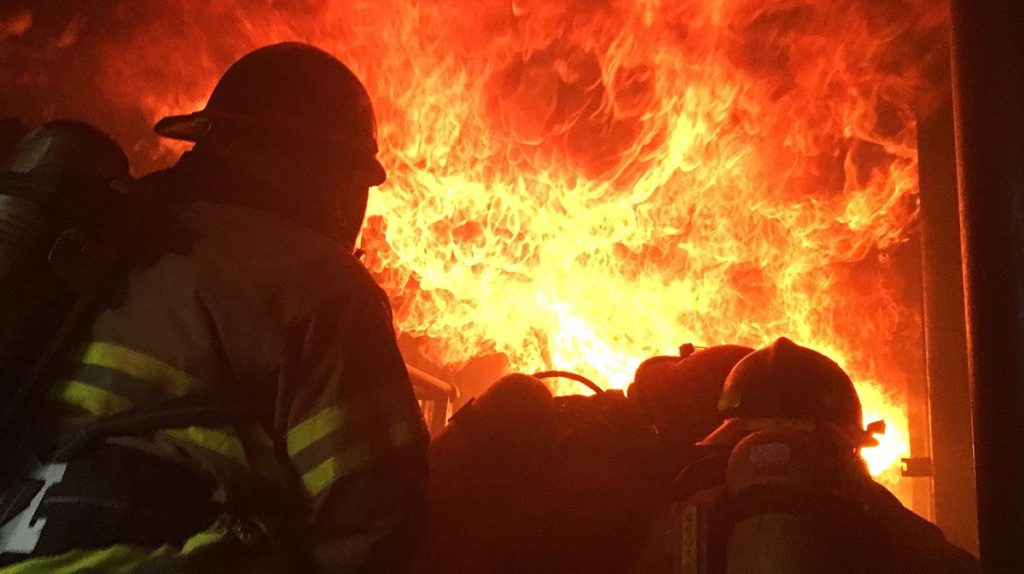Last week our Community Engagement Coordinator, Angela Hewitson, completed the Basic Safety Training Course offered in partnership by the Northwest Maritime Center, Compass Courses and Washington Workforce Development. Here’s what she had to say about it.
What was your favorite part?
I love experiential learning, so the hands-on exercises were by far my favorite. I had no idea what I was doing or how I would react to a full scale fire or how to tread water in an immersion suit. Both are extremely claustrophobic situations, and even the professionals told us that it is hard to manage. But with a few mindful tricks, I felt as if everything was happening in slow motion and I could really dial my focus, use my training, and by the time it was over, I felt like I could keep going! The fear was eventually suppressed by adrenaline, and when your team around you is equipped with the tools of survival, you know you are going to come out of this.
What was the biggest challenge?
The hardest part of this training was absorbing everything that was new to me at once: processing the information given to me, the gear that was engulfing me, and the actions needed to ensure I accomplished what needed to be done. I am grateful to have had the ability to do this in a safe and contained environment so that I could focus on what needed to happen when others around you experience panic and shock.
What did you learn?
This training was designed for Coast Guard standards by Compass Courses in such a unique and profound way by immersing mariners in emergency situations. Each module was set up in a classroom environment and was followed by a practical which was critical to our understanding of probable emergencies that happen aboard a vessel: a fire, an evacuation, injuries, and even social mishaps. We were taught how to classify them, report them, how to move forward without creating panic, and ultimately secure the safety of a vessel and everyone on it. As they say, “If it can happen on land, it can happen on your boat.” If you think about all of the other variables happening aboard, a survival situation is something you don’t want to approach for the first time as it is happening.
We were introduced to and expected to put on personal survival gear—including a full firefighting outfit with breathing masks attached to thirty minutes of oxygen—and were brought to a contained, live-fire training facility in Seattle. By the end of the day we were expected to enter a space filled with black smoke and fight different classes of fire, perform a rescue, and were instructed to drop to the floor to witness a flashover—flames shooting from floor to ceiling and then across our heads to the opposite wall. It was incredible. The learning capacity was brought to an entirely new level where I felt real fear in my body. In the real world crew members are not expected to fight fire, but after my experience in the M/V Fire Dragon, I feel a whole new sense of confidence that I could successfully draft a fire prevention plan, and if needed, contain and suppress a fire as well.
The personal survival training followed with a module that involved learning how to prepare emergency plans, run drills aboard your vessel, respond to man overboard situations, and abandon ship. Understanding the gear available to crew was essential to this training—often crew members do not even know what is inside a Coast Guard-certified life raft. We were taught how to manually launch a life raft and shown how the raft activates itself when a vessel is sinking. We held the raft contents and were instructed on what the contents were, how they work, and when and where to use them so that we felt equipped for survival at sea.
Next we actually got into a pool with immersion suits on—something I had never done before. We then separated into two teams to interact with a full scale life raft, flipped it upright in the water, and then got inside of it—an exhaustive process even without waves pushing you around. This was another circumstance where, in an emergency situation, having prior first-hand experience with the gear increases your comfort level and chances of your survival.
The rest of the week we focused on First Aid, CPR, Personal Safety and Social Responsibility—all of which are critical to functional daily operations aboard any vessel.
What benefit does it provide you for the future?
I believe that if you want to work on a boat or own your boat, receiving this training is critical to being a competent mariner. Eventually I want to be a captain to my own fishing vessel, which means I will be responsible for my crew and must be equipped to deal with absolutely anything that happens aboard. This training assures that I can remain calm and perform the tasks taught to me to secure the safety of my crew and vessel.
